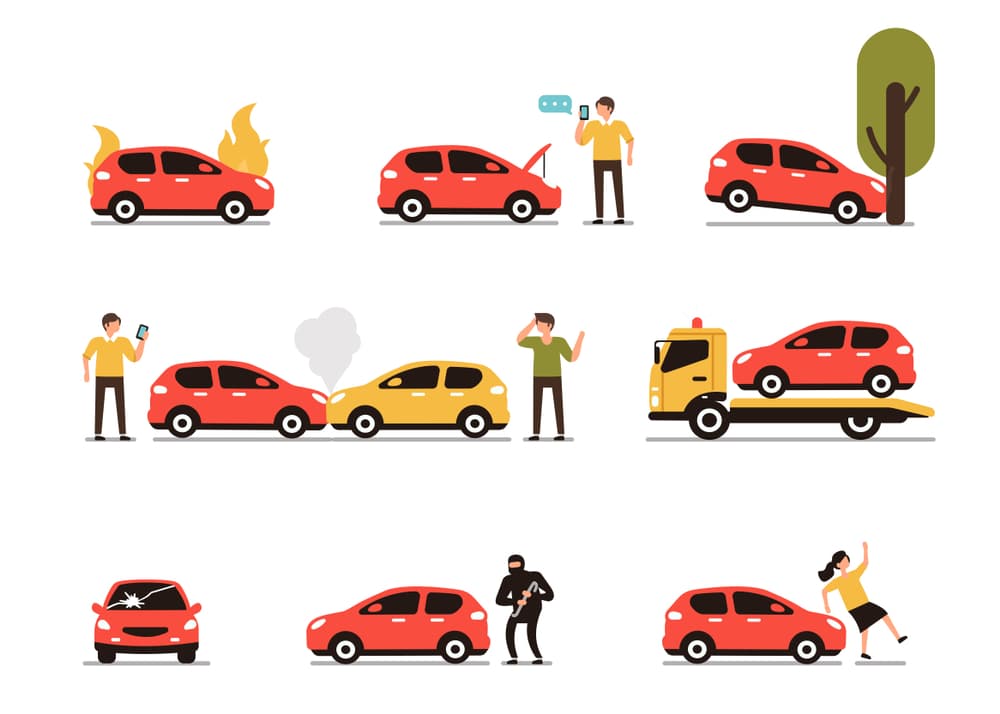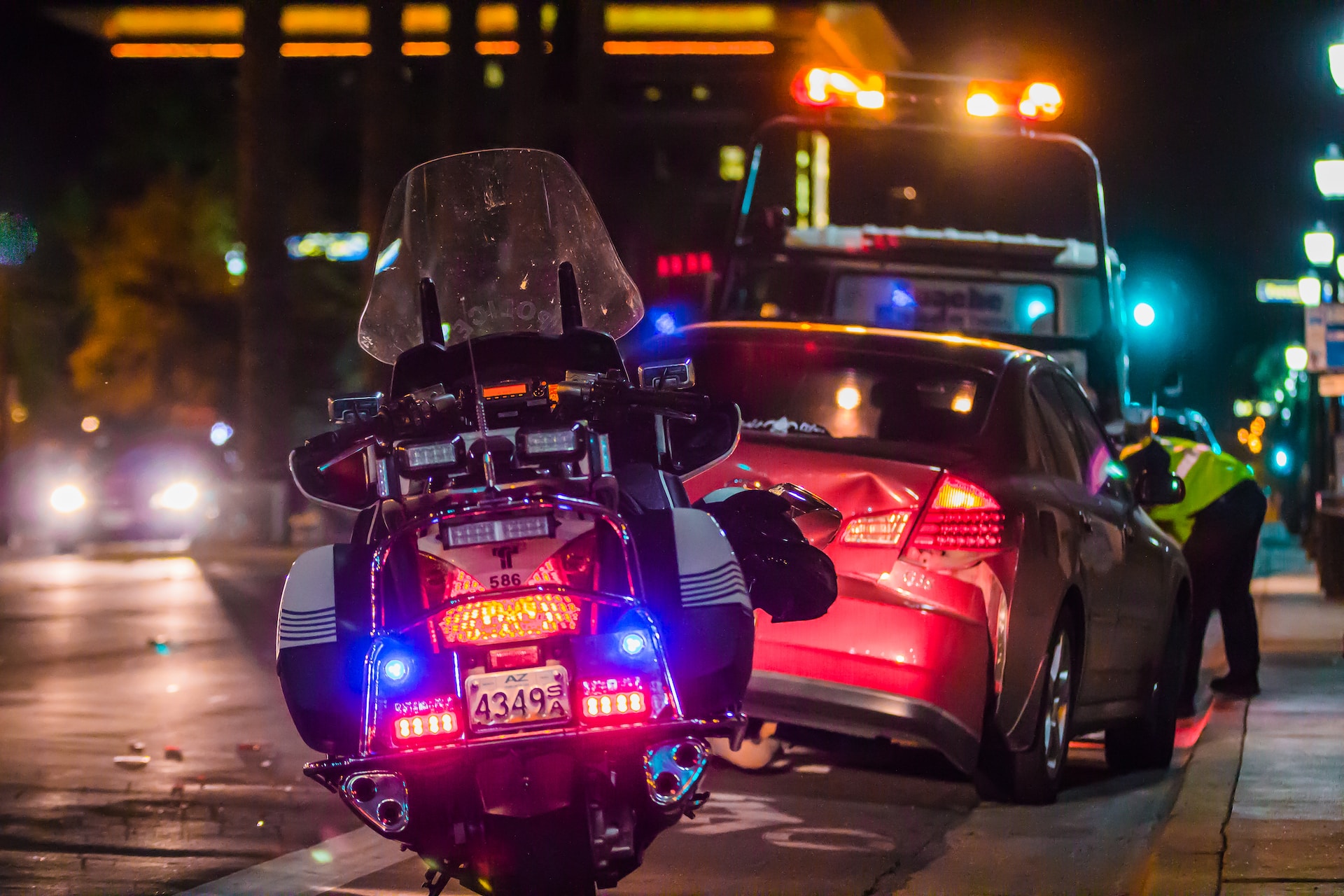Car accidents can have severe physical and emotional consequences.
In Wisconsin, with its unique blend of urban and rural settings, drivers face many scenarios where accidents can occur.
If someone injured you in one of the thousands of car accidents we see here every year, contact a Wisconsin car accident attorney for your free consultation to find out how to get compensation and justice.
Table of Contents
- Head-on Collisions
- Side-Impact Accidents
- Rollover Accidents
- Multi-Vehicle Collisions
- Accidents Involving Pedestrians
- Motorcycle Accidents
- Hit-and-Run Accidents
- Why Seek Legal Counsel?
- When Should You Contact an Attorney?
- How to Choose the Right Attorney
- Contact a Wisconsin Car Accident Attorney
Head-On Collisions
Head-on collisions are some of the most serious accidents in Wisconsin. These accidents usually happen at higher speeds and have a greater chance of causing significant injuries or fatalities.
When two vehicles collide head-on, the impact increases because both vehicles are moving toward each other.
Wisconsin has installed roundabouts to reduce the number of head-on collisions.
The use of roundabouts in intersections reduces crashes that cause injuries by 75 percent.
Side-Impact Accidents
Side-impact or T-bone accidents occur when one vehicle collides with the side of another vehicle.
These are common at intersections, where failure to yield or running a red light are often the culprits.
Rollover Accidents
Rollover accidents are rare compared to other vehicle collisions, but they often result in severe consequences.
In a rollover accident, a vehicle flips over onto its roof or side, turning an already dangerous situation into a potentially fatal one.
While any vehicle can roll over, the likelihood increases with larger vehicles like SUVs and trucks due to their higher center of gravity.
The relative scarcity of rollover accidents shouldn’t detract from their severity. Although they occur less frequently, they have a disproportionate impact in terms of severe injuries and fatalities.
This makes understanding the unique legal challenges and options around rollover accidents crucial for anyone involved in one.
Multi-Vehicle Crashes
Multi-vehicle collisions or pile-ups often occur on busy highways or interstates. These involve multiple vehicles and can result in severe damage and injuries.
Wisconsin has a history of accidents involving more than one car, particularly in winter months when snow and ice create treacherous weather. While you might think dangerous weather conditions like snow or rain would account for most accidents, the statistics indicate that a significant number of crashes occur in clear weather (67,701 in total).
This could be due to driver overconfidence in good conditions or simply the higher frequency of clear weather days.
Winter-related weather conditions like blowing snow and regular snow account for only 523 and 7,986 crashes, respectively.
This data underscores the need for heightened caution when driving in these conditions.
By understanding the correlation between weather and crash rates, you can better prepare for the challenges that come with driving in Wisconsin.
Always check the weather forecast before hitting the road and equip your vehicle to handle adverse weather.
Accidents Involving Pedestrians
Pedestrian accidents remain a pressing issue in Wisconsin, particularly in urban areas where foot traffic is higher.
The factors contributing to these accidents range from drivers failing to yield the right-of-way to simple inattentiveness.
To deepen our understanding, let’s turn to the most recent data.
- In 2015, there were 1,289 pedestrian crashes, resulting in 54 fatalities and 1,227 injuries. Of these injuries, 216 were classified as severe, or “A-Injuries.”
- The year 2016 saw a slight decrease in pedestrian crashes to 1,252, yet the fatalities dropped to 49. Injuries totaled 1,181, with 198 being severe.
- Jumping to 2018, Wisconsin experienced a spike in pedestrian crashes to 1,533, with 55 fatalities. The number of injuries reached 1,438, and severe injuries surged to 288.
- In 2019, the number of crashes was relatively stable at 1,505 but saw an uptick in fatalities to 57. The total injuries were 1,412, with 276 counted as severe.
- The data from 2020 indicates 1,460 pedestrian crashes, 53 fatalities, and 1,372 injuries. Among these, 277 were classified as severe.
- For a broader perspective, the average figures from 2015-2019 tell us that there were approximately 1,408 pedestrian crashes each year.
- These incidents resulted in an average of 54 fatalities and about 1,326 injuries. Of these injuries, around 251 were serious.
Key Observations
- The number of pedestrian crashes oscillates yearly, but the fatalities remain comparatively stable, accentuating the significant risks associated with pedestrian accidents.
- Severe injuries, under Pedestrian A-Injuries, maintain a level of consistency over the years. These numbers form a part of the total injury count, reinforcing the serious nature of these accidents with injuries.
- While 2020 witnessed a decline in the number of pedestrian crashes and injuries compared to the previous years, we don’t know whether this constitutes a one-year dip or the start of a trend.
Motorcycle Accidents
Motorcycle accidents continue to form a major public safety issue in Wisconsin.
Starting in 2015, the state recorded 2,221 motorcycle crashes, resulting in 80 fatalities and 1,906 injuries. Among these injuries, 493 were categorized as severe.
In 2016, a minor increase in motorcycle crashes to 2,250 was observed, alongside 82 fatalities and 1,973 injuries. Severe injuries were slightly down at 477.
By 2018, the crashes had marginally decreased to 2,206, but fatalities dropped to 76. Interestingly, severe injuries spiked to 619 that year.
The year 2019 presented a concerning downturn, with 1,967 crashes, 81 fatalities, and 1,693 injuries. Severe injuries slightly decreased to 536.
In 2020, there was another increase to 2,104 motorcycle crashes, including 112 fatalities and 1,796 injuries, 581 of the injuries severe.
The average figures from 2015-2019 can offer additional context. On average, about 2,090 motorcycle crashes happen per year, resulting in around 80 fatalities and 1,813 injuries. Of these injuries, about 521 were severe.
The data shows a somewhat fluctuating trend in the number of crashes, but a consistent challenge in reducing the number of fatalities and serious injuries.
This information emphasizes the ongoing need for effective safety measures and public awareness for drivers who need to share the road with motorcycle riders.
Hit and Run Accidents
Hit-and-run accidents are unsettling incidents that leave victims vulnerable and often without immediate recourse.
Understanding the scope and how to deal with a hit-and run accident is important for anyone navigating the legal maze that typically follows an injury after being struck by an unknown driver.
In Wisconsin, hit-and-run crashes vary considerably depending on their location:
- Intersection: Intersections are hotspots for hit-and-run crashes involving both injury and property damage. According to available statistics, 11 fatal crashes, 1,055 injury crashes, and 4,504 property damage crashes were recorded at intersections, totaling 5,570.
- Non-intersection: Locations other than intersections also bear a significant number of hit-and-run incidents. These included 14 fatal crashes, 1,040 involving injuries, and a staggering 10,235 resulting in property damage—adding up to 11,289 total incidents.
- Parking lot: While parking lots generally involve lower speeds, they aren’t exempt from hit-and-run incidents. The stats show 104 crashes involving injuries and 3,650 involving property damage, making a total of 3,754 reported incidents.
- Private property: Incidents on private properties are fewer but still noteworthy. These include 35 injury-related crashes and 729 that led to property damage, totaling 764 incidents.
In total, Wisconsin recorded 25 fatal hit-and-run crashes, 2,234 causing injuries, and 19,118 resulting in property damage. The total comes to 21,377.
Car accidents are varied in nature and severity, but all bring about a set of challenges that no one wants to face alone.
Being informed about the types of car accidents and their consequences allows you to take preventive measures, making Wisconsin roads safer for everyone.
For a comprehensive review of your specific situation following a car accident, consider speaking with a qualified attorney who understands Wisconsin’s traffic laws and can guide you through the legal intricacies involved.
Why Seek Legal Counsel from a Wisconsin Car Accident Attorney?
- Complexity of law. You need a law degree to understand Wisconsin’s intricate traffic laws and regulations and how they apply to your case.
- Dealing with insurance companies. Insurance adjusters are skilled negotiators who aim to settle claims for as little money as possible. An attorney can safeguard your interests, ensuring you don’t accept a lowball settlement.
- Evidence gathering. You need to accumulate evidence such as police reports, witness statements, and medical records to build a strong case. An attorney can handle this important process for you.
- Filing legal documents. Lawsuits entail a myriad of paperwork, deadlines, and legal jargon. A misspelled word or a missed deadline can damage your case. A car accident attorney in Wisconsin will manage important documents while you recover from your injuries.
When Should You Contact an Attorney?
Timing is important, and so is contacting an attorney as soon as possible after the accident to ensure vital evidence is preserved and deadlines are met.
According to Wisconsin Statutes Section 893.54, you have a limited time from the date of the accident to file a personal injury claim.
Waiting too long can mean forfeiting your right to compensation.
How to Choose the Right Attorney for a Car Accident
- Experience. Hire an attorney who has a history of handling Wisconsin car accident cases and can get results. Their understanding of the specific laws and precedents related to these types of cases will be invaluable.
- Reviews and testimonials. Look for positive reviews or ask for testimonials from past clients to gauge the attorney’s reputation.
- Communication. An open channel of communication between you and your attorney is essential. You should feel comfortable asking questions and expect timely and transparent answers.
- Fee structure. Discuss the attorney’s fee structure upfront. Most car accident lawyers in Wisconsin work on a contingency basis, meaning they only get paid if you win your case.
After hiring an attorney, keep all medical appointments, gather all bills and documents, and maintain a journal detailing how the accident impacts your daily life. These steps help build a solid case.
Contact a Wisconsin Car Accident Attorney

Legal representation can spell the difference between a well-compensated claim and an uphill struggle for your rights or even a claim denial.
When you or a loved one was in a car accident in Wisconsin, reach out to an accident attorney from the Pemberton Personal Injury Law Firm who can guide you through the labyrinth of the court system and insurance companies, leaving you free to focus on your recovery.
For a no-obligation consultation, dial 608-448-6242 today or contact a skilled personal injury lawyer to begin the journey toward reclaiming your life. Find out how we can help you and determine if we are the right law firm for you and your family.
 Calls Answered 24/7
Calls Answered 24/7









